Orbs - FAQ

Orbs are paranormal, aren’t they?
Though there is overwhelming evidence that orbs are out of focus bits of dust and raindrops, many people still continue to believe that they are paranormal in origin (see this video). The orb zone theory explains the reported appearance and characteristics of orbs very well (see here for illustrations of orb behaviour including a video of dust turning into orbs). By contrast, paranormal orb theories are vague. So why do people stick with paranormal theories?
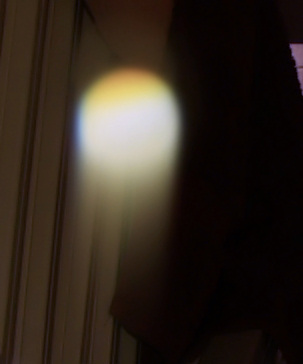
Frequently Put Objections to a natural theory for orbs
Here are some typical objections to a natural theory of orbs. It’s a sort of FRO - ‘Frequently Raised Objections’. It’s a bit like a FAQ really…
Q: There was no dust or moisture present and I cleaned the camera lens so how could the orbs be dust?
Q: The relative humidity was low, so it can’t be moisture orbs!
A: Dust is omnipresent**. Just look at a sunbeam shining through partly closed curtains in an otherwise darkened room, even one kept scrupulously clean. Dust is so ubiquitous that electronics manufacturers have to build special ‘clean rooms’ to stop it spoiling their semiconductor manufacture. Outside such very special situations, you will never exclude dust from places where photos are taken.
Dust on the lens is not the source of orbs so cleaning your camera will make no difference*. It is dust in the orb zone, a few centimetres in front of the lens, that appear as orbs.
Moisture in the air does not produce orbs, unless it forms a mist or falls as water droplets, such as rain. Unless relative humidity reaches 100%, water will not condense and form droplets, such as dew or mist. So measuring humidity is irrelevant to deciding if orbs are formed by water droplets.
* Dust on the lens CAN, however, affect the ‘detail’ seen in orbs even though it does not create the orbs themselves - see faces below. Cleaning your lens won’t get rid of orbs but it might change the ‘detail’ inside them!
** Dust stays in the air continuously, mainly because of air currents. Air currents are produced by object movement, drafts, convection (any difference in temperature between surfaces in a room generates convection) and static electric fields . In environments with no drafts or object movement larger bits of dust will settle over time, but there is always enough convection to keep smaller bits of dust in the air all the time. Out of doors there are also winds to move dust about, in addition to convection. Because such winds are often more powerful than air currents inside, larger bits of dust may be picked up and moved around. You may not see it but dust is always there nevertheless.
Q: Some people get orbs on many photos while others never get any. How is that explained?
Q: Why don’t orbs show up in all flash photos?
Q: I never get photos of orbs. How can I take some?
Q: If it’s dust, why don’t I get orbs in all my photos?
A: The number of orbs seen in photographs, if any, will depend on many different factors, some of which can vary from second to second and photo to photo. These include, physical sensor size, distance of subject, focal length of lens, darkness of background, physical disturbance in the area and so on. Anyone who wants to see orbs a lot could use these theoretical factors to increase their chances or may simply discover them by trial and error.
Specifically, dust (or insects, water droplets etc) only show up when the enter the orb zone, which is just in front of the camera lens.
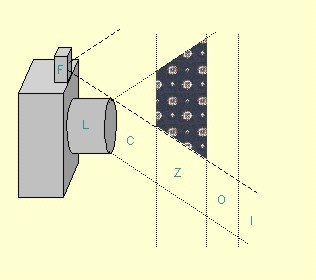
In this diagram (left) the orb zone is the shaded area. The key is: ‘F’= flash unit, ‘L’ = camera lens, ‘C’ = area where dust is too out of focus to show up (because it is too close to the lens), ‘Z’ = area where dust can show up in flash light as an orb, ‘O’ = area where dust is still out of focus but too far from the flash to show up as orbs, ‘I’ = area where objects are in focus so dust would not appear as circles. The area between the line with long (diagonal) dashes is illuminated by the flash. The area between the (diagonal) lines with short dashes is the area visible to the lens (the frame).
It is possible the areas ‘C’ or ‘O’, or both, may not exist in some camera models (so that the orb zone stretches right from the camera to where objects are in focus).
The orb zone can change in position and size depending primarily on the depth of field and flash duration. These two factors vary from picture to picture. On most modern cameras they are altered automatically without user intervention so the orb zone can change without the photographer being aware of it.
So even if dust particles are distributed evenly through the air, the numbers that appear as orbs can vary greatly between exposures. But dust particles are not distributed evenly. Their concentration depends on air currents and physical disturbance (such as people walking through the area) which vary over time. So even if you keep focus and depth of field constant, the number of orbs will vary between exposures. Experience shows that, for most camera models, orbs only show up in favorable circumstances, such as when the orb zone is large.
The size of dust particles is also important. Orbs are produced by the larger particles of dust. like those visible in a shaft of sunlight entering a darkened room. These are not always airborne but require something like a physical disturbance in the area (such as someone walking about) or air currents to get them floating.
It is a complex subject discussed in detail here. You can see videos of dust actually turning into orbs and orbs disappearing as they reach the edge of the orb zone here. See here for a further discussion of why orb numbers vary between exposures.
Q: If orbs are dust or insects, why are they circular instead of dust or insect-shaped?
A: Orbs are not formed from the whole object but only the brightest highlights. So there is no reason why they should be dust or insect-shaped. They are, instead, expanded circles of confusion.
Q: I have seen photos of a fast moving orb. Surely dust cannot move that quickly.
A: The flash from a camera typically lasts around 1/1000s. Dust certainly cannot move far enough to show motion in that period. However, photos apparently showing fast motion may actually be something else.
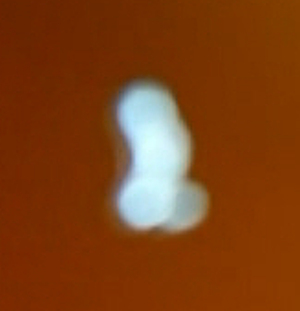
The photo here (above) is typical of apparently fast moving orb photos. However, if you look at the image closely, it consists of a number of overlapping circles (orbs). If this was a single orb it would have to be jumping in some way at incredible speed to produce such an image. In fact, the image is a grab from a video of dust illuminated by a torch (see here for the video and here for more about it). The object is an out of focus bit of dust consisting of a fibre. The overlapping orbs come from several highlights on the fibre. Most bits of dust are rather smaller than this and only have one highlight resulting in a single orb. Such a tight group of overlapping orbs can also be created by a insect.
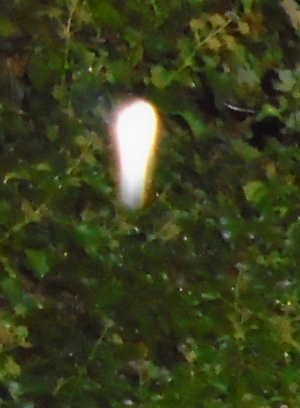
In the next photo there is an orb which is genuinely in fast motion. It is a ‘tailed orb’ which really did move enough to produce a light trail within the duration of a camera flash. It is, in fact, caused by a falling rain drop. Rain typically falls at 0.5 cm in one thousandth of a second (though it varies a lot). This is ample to show up as a trail when the drop is inside the orb zone, just a few cm from the camera lens. Note how different the tailed orb, which is really moving, is compared to the overlapping orb above.
Some tailed orbs are reported indoors. The obvious answer here is insects, as dust would move too slowly. So how fast do insects fly? Different species can move at anything from 0.5 m/s up to 7 m/s! So an ‘average’ insect might do 3 m/s or around 0.3 cm in one thousandth of a second. That’s easily fast enough to show up as a tailed orb in a flash photo.
There is another example of a tailed orb at the top of this page.
Q: Why have orbs appeared just recently when dust has always been around?
A: Orbs became much more common when digital photography took off. That’s because the early digital cameras had sensor chips that were physically much smaller than the 35mm frame size of film cameras. That, in turn, meant that the cameras had a much increased depth of field. As a consequence, objects that were just too close to be in focus were much closer to the lens and also to the flash unit. Previously, in film cameras, these ‘just out of focus’ objects were usually too far from the flash to show up*. See OZT.
* You CAN get orbs with film cameras but they are much rarer.
Q: I got lots of orbs in one photo and then none in another taken just seconds later - surely dust can’t do that?
A: There are two aspects to this problem. Firstly, the questioner is assuming that dust is evenly distributed through the air. In reality, dust occurs in clusters and gaps, constantly driven by air movement and atmospheric ions, as well as dust continually joining and leaving the air from nearby surfaces. Air movement is caused by the wind, movement of objects (including people) and, particularly, convection currents caused by minor differences in temperature across distance. Dust concentration is also affected by the location of nearby sources of dust (object surfaces) and whether they have been disturbed or had air currents flowing over them. The overall effect of all these factors is that dust concentrations vary continuously over time at any one location.
Secondly, the orb zone, where dust appears as orbs, is tiny. To see why this matters, consider the following hypothetical example. Suppose you have a swimming pool covered in hundreds of small plastic toy ducks. They will tend to float around randomly, sometimes clustering, sometimes leaving large gaps, according to air and water movement. If you take a sample of one square metre of the surface of the pool and count the ducks, it will be broadly similar to the number found in adjacent square metres. Let’s say you generally find around 8, plus or minus 2. So that’s a range of 25%. But if you choose a sample size of only 0.1 square metres, you may sometimes get one duck, occasionally two and often none at all. That’s a range of 200%! In other words, with small sample sizes, the count can vary a lot more over time, even though the overall distribution across the pool remains pretty uniform. It is an example of the Law of Large Numbers.
The ‘sample area’ in the orb zone is relatively small, so that the numbers of particles of dust can vary a lot from second to second, even though the overall concentration of dust in the room may show little variation over time. It is therefore perfectly possible to have a cluster of orbs in one photo and none in the next, taken just seconds later.
Furthermore, the orb zone itself can vary in size between each photo. Modern cameras are highly automated and may vary many exposure parameters between shots, even when there are few apparent changes in the scene itself. The slightest alteration in lighting, the field of view or focusing will change the parameters. Also, if the camera moves even slightly between shots, which is inevitable when it is hand-held, this will effectively change the scene, also changing exposure parameters. Anything that affects the size of the orb zone will have a big effect on the number of orbs seen, even if the dust was spread evenly.
The crucial exposure parameters affecting orb numbers are those that alter the depth of field of the camera lens. These are: the focal length of the lens (altered by zooming in and out), the aperture (which controls the amount of light allowed through the lens to the sensor - f-stop) and the distance of the subject (ie. the thing you are focused on)*. In many digital cameras, particularly compacts, it is difficult or impossible for users to control these variables.
Another important point is that dust particles are not usually spherical. Indeed, most domestic dust consists of fibres which are linear. Furthermore, these dust particles rotate (you can see this for yourself in a dusty room illuminated strongly by sunlight). As they rotate, the dust particles reflect more or less light to a stationary observer. The result is that the orb produced by an individual dust particle might be bright in one photo, dim in another and non-existent in a third, all within the space of a few seconds.
Some people deliberately capture orb photos by simply shooting flash pictures into a night scene, out of doors. This works well because the flash will go on for its longest duration with no nearby subject to illuminate. Also, the dark background will show up faint orbs well. The number of orbs is likely to vary rapidly in such a situation, partly because of the high air movement outside but also because the camera will struggle to cope with an almost black scene and so will vary its exposure parameters a lot.
In summary, firstly dust is not distributed evenly so it is entirely possible for orb numbers to vary drastically between shots. Secondly, the orb zone size may change significantly between shots with automated cameras, affecting orb numbers. Thirdly, dust particles rotate so that reflect different amounts of light, producing orbs on one occasion but not a few seconds later.
* Automatic white balance may also affect the visibility and colour of orbs. This can vary drastically between photos depending on whether there is a white object in the field of view!
Q: Orbs appear mostly in haunted locations. Why is this, if orbs are dust?
A: If you look at the answer to the previous question you will see that orb numbers can vary a lot randomly. As with any random variations, apparent patterns will inevitably appear. If, for instance, you take most of your photos on ghost vigils, it is inevitable that most of your orbs will be recorded at haunted locations. To do a meaningful test you would need to take equal, large numbers of photos in haunted and non-haunted locations under the same controlled conditions and compare the two. Luckily it has already been tested in a controlled experiment. There was found to be NO significant difference between the numbers of orbs in the two locations.
Q: I got an orb when there was a high reading on the EMF meter. Doesn’t that make it paranormal?
Q: I felt a presence just as the photo of an orb was taken. Surely that’s paranormal?
Q: Orbs appear when I ask for them. Doesn’t that mean they’re intelligent?
A: In all these cases, and similar ones, it is a coincidence. There are a number of factors that affect when you get an orb in a photo. These include:
- the depth of field of the lens (which is affected by manual zooming and automatic autofocus)
- the distribution of dust, insects, rain etc in the area, which is effectively random
- whether a flash is used and how long it goes on for (an automatic function of the camera)
- how dark the background is
Most of these factors are either uncontrollable, or difficult to control, by the photographer. Therefore, it is difficult to predict exactly when orbs will appear. By sheer chance, orbs are bound to appear by coincidence occasionally at ‘significant’ times such as when something apparently paranormal is going on. See also this question.
We tend to have a selective memory when it comes to coincidences, particularly if they have an apparent significance. If event A happens at the same time as event B, we will frequently remember it, while forgetting all the times when A happened but not B and when B happened but not A. So if event A is a high reading on an EMF meter and event B is taking a photo containing an orb, we tend to remember it when they happen together. If event A is a feeling of presence and event B an orb, it might appear even more significant. To show a real causal relationship, however, you’d need to collect a statistically useful sample of all A and B events and show they happened more frequently than chance by a statistically significant margin.
Q: Orbs have been reported behind objects in photos. Surely, that shows they are not dust just in front of the camera lens.
A: It is actually extraordinary that ALL orbs occur IN FRONT of everything else in almost every orb photo, regardless of what else is in the picture. Another odd fact is that orbs almost never appear to be larger than around 10% of the frame size* (larger circular shapes in photos generally turn out to be lens flare). If orbs were really objects floating in the air, why do they always occupy a sharply defined zone just in front of the camera but never close enough to look very big? Another odd thing is that there are photos of orbs taken against a background where everything is too close to be in focus. This implies that the orbs must ALSO be out of focus since they must also be too close to be in focus.
So, what about the orbs apparently behind objects in rare photos? When you examine such photos you will notice that it only ever involves faint orbs apparently behind dark, light or strongly coloured objects. One problem with digital photographs is that they have a smaller ‘latitude’ (or dynamic range) than film. That means they lose detail in dark, light or highly saturated areas. The faint orb has, in effect, been overwhelmed by the strong colour of the object behind. You might, if you are lucky, using photo software enhancement, be able to show that the orb is, in fact, in front of the object. However, in some cases the detail is simply irrecoverable. Compact cameras tend to be suffer most from low latitude. Also, photos with a high level of electronic noise and / or shot with a high ISO may have lower latitude than other shots.
*Orbs can be bigger than 10% of the frame size in telephoto shots or with particularly reflective objects like insects

In this photo you can see a cluster of orbs in front of a copy of our newsletter, ASSAP News. Note the parts ‘missing’ (over the lighter areas of the photo) from some of the the fainter orbs in the cluster over the word ‘News’. The brighter orb below, over the ASSAP logo, is dense enough not to lose any bits to the light background. This shows how bits of orbs can go ‘missing’, leading to the idea that they are behind objects in the photo.
In addition, orbs can appear to be behind an object in the photo because of over-processing. This is where a photo has been heavily processed in photo software and the fine details of a faint orb have been effectively eliminated. There is an example of that here.
Q: I have seen orbs with the naked eye. How is that possible if they are a photographic artifact?
A: People have reported seeing small lights in the air, very rarely, for centuries. No one called them orbs before the arrival of the camera orbs. There is no evidence that these phenomena are in any way related. Orbs are the circles that were NOT seen at the time of exposure. All the evidence points to orbs being photographic artifacts while lights seen at the time could be paranormal or, indeed, another natural phenomenon but they are NOT orbs!
If you do photograph a real light phenomenon, it is highly likely to appear bright, uniform and featureless in the picture. It may well appear white, even if it looked another colour at the time of exposure. This is because, as it is a light source, it will probably be over-exposed. Your camera’s exposure system is unlikely to take into account small glowing objects when deciding on its exposure which is why you get over exposure. If you use a flash it might overwhelm any faint light phenomenon so that it may not appear at all.
There are other circles of lights that sometimes get reported as orbs. These can be photographed and seen with the naked eye. These have various differing explanations (see green orb video, for example). However, strictly speaking ‘true orbs’, as most people understand them, are always circular (or another regular shape, like a diamond) and only ever seen in a photo (or a digital camera viewing screen), never with the naked eye.
Q: I’ve seen orbs while filming that were not visible to the naked eye. How is that possible?
A: Very occasionally, you can actually see orbs in a camera (eg. through a viewfinder) while taking photos or filming with a video camera. If you look for them with your naked eye at the time, you won’t see them. This can happen with video cameras using a powerful illuminator (eg. low light or infrared) or when the flash fires while using a DSLR. This is to be expected as orbs are purely photographic artifacts. Generally, the human eye has a very different depth of field to a camera so it will rarely see out of focus dust, even when strongly illuminated.
When orbs show up in video, they often drift around and appear and disappear. This appearance and disappearance depends on how they drift in and out of the orb zone.
Q: If orbs are caused by dust or insects, why don’t you get photos of orbs mixed with dust or insects?
A: With insects, you do but it isn’t easy! It is possible, with a little patience, to produce a photo of a swarm of insects where some are orbs and others in-focus insects. Here is an example.
Dust particles are, of course, much smaller than insects. It is more difficult (though not impossible - see next question) to get photos of mixed dust and orb swarms. Dust, because of its size, needs to be much closer to the camera to form orbs. Because of their small size, individual dust particles virtually never appear in photos, except as orbs when strongly illuminated by a flash unit.
Q: How can a camera pick up dust that I can’t see with my eyes?
A: Ordinarily dust is far too small and dim to show up in a photo, which is why we don’t see dust in most pictures (or see it with the naked eye). However, when brightly illuminated and close to the lens, it can show up. When caught be a flash and slightly out of focus they appear as orbs.
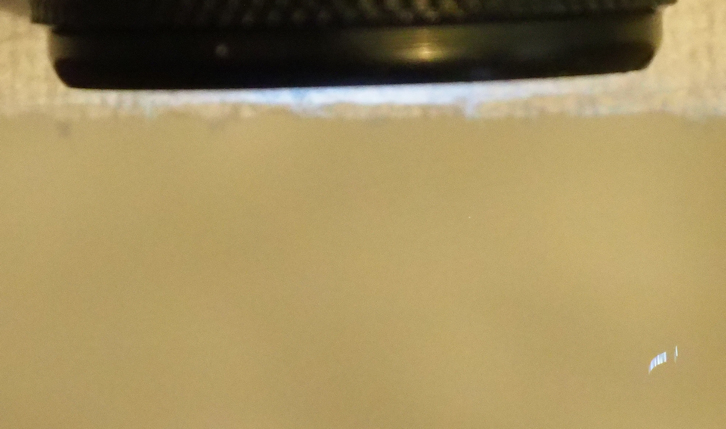
In the photo above you can see dust in focus (ie. not as an orb), bottom right, illuminated by a torch (above). No flash was used. This demonstrates that normal consumer cameras can indeed photograph dust in certain special circumstances. Experiments suggest that those dust particles made visible by a shaft of sunlight or torchlight can be photographed as orbs. For more details, see here.
Q: Dust orbs are supposed to be small (no bigger than about 10% of the frame size). I’ve taken photos of larger orbs!
A: Dust orbs, which are circles of confusion, cannot exceed a certain size because, as they become larger they spread out so much that they are no longer visible. When people report larger orbs than this, it usually turn out to be lens flare. This is an entirely different phenomenon, caused by reflections inside the camera from a bright light source in, or more frequently just outside, the frame of the photo. Look for clues like a line of ‘orbs’, fogging or bright light sources in or just out of the frame. You CAN, very rarely, get orbs larger than 10% of the frame size where a zoom (either optical or digital) is being used.
Q: I’ve seen the same orb twice. I’ve also seen some orbs with faces! How can these be dust?
A: Remember that orbs are not actually the dust itself but circles of confusion, or blur disks, caused by the dust. Only the fainter, larger orbs (caused by dust closer to the lens) have apparent patterns or ‘structure’ within them. In brighter, smaller orbs such ‘structure’ is too fine to be made out and is, in any case, drowned out by the brightness of the orb.
Usually circles of confusion are small and in the distance, so people don’t worry about them too much. Having them big and in the foreground, as with orbs, makes people notice them. The ‘detail’ or ‘structure’ within a circle of confusion is very sensitive to any slight physical deviations from the ‘perfect’ lens. These include chromatic and spherical aberrations and even fingerprints or dust on the lens. Cheaper lenses will, typically, produce more ‘detail’ than more expensive ones.
The precise appearance of the circles of confusion depends primarily on the exact shape and layout of the lens elements in your camera (camera ‘lenses’ actually consist of several separate lenses). Thus, it will vary not only from model to model, but even with individual camera to camera. For instance, a fingerprint on a camera lens could affect the ‘structure’ of your orbs! Dust physically ON the lens (as opposed to the dust floating in front of it causing the orbs themselves!) frequently shows up as small circles within your orb. Try cleaning your camera lens and see how it affects the ‘structure’ of the orbs. Also, try taking photos of orbs with different cameras, at the same time and place, and compare the ‘structure’ of the orbs. If the orbs were really ‘out there’, and not just photographic artifacts, they should all look identical with any equipment and should not be affected by cleaning lenses.
Typical ‘structure’ seen in circles of confusion can include a bright outer ring, colour fringes around the edges (caused by chromatic aberration in the lens or refraction in rain drops), concentric rings, straight lines and various ‘shapes’ (like the small circles caused by dust ON the lens). Though the ‘structure’ depends on the lens, its exact appearance will depend on the size and brightness of the individual orb. Orbs of similar size and brightness in a single picture will all look much the same.
Typically, the factors mentioned above that affect orb appearance will not change much over a short period of time. So you can easily get two very similar looking orbs in photos taken a short time apart. They may be caused by two different bits of dust but may appear to be the ‘same’ orb. It’s remotely possible that that they COULD be caused by the same bit of dust but it’s unlikely, given that dust is in constant motion and likely to float out of the orb zone quickly.
Effectively, the ‘structure’ you are looking at is ‘optical noise’. As with any noise, patterns will sometimes be seen in the random shapes. Any suitable arrangement of a line (‘mouth’) and two dots (‘eyes’) is likely to suggest a face. People are particularly prone to seeing ‘faces’ in random shapes. You should clean the lens on your camera. It won’t stop you getting orbs but they should no longer have ‘faces’. Cleaning the lens will also stop you seeing the ‘same’ orb again (because the ‘structure’ will change!).
The subject of ‘bokeh’, which examines the appearance of circles of confusion is poorly documented. Here are some links that might be useful: Understanding Boke, testing bokeh, Bokeh.
Interestingly, if the orb was actually a glowing ball of light, rather than dust reflecting the flash, you would never expect it to have ‘features’ at all. Instead, it would always appear bright, uniform and featureless, due to over-exposure. Since it would be only a tiny feature in the photo, the camera would choose expose parameters for the overall scene, meaning it would inevitably overexpose the orb, completely destroying any possible ‘features’. Indeed, it is a way of ruling out ‘glowing objects’ as a cause of orbs and the same argument would apply to grey and / or transparent orbs, particularly against a dark background.
Q: What about brightly coloured orbs? Surely that’s not dust.
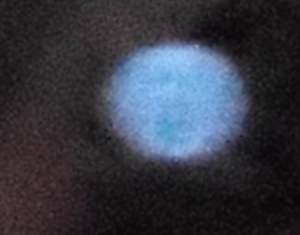
A: Brightly coloured orbs (like the blue one here) are often caused by image noise. It is a kind of electronic noise in digital photography. It appears as random shapes and colours. You can see it in the photo (right). Though it is random, the noise often appears as blotchy areas of a similar shade. You can see these ‘blotches’ of different colours of blue in the orb (right). Sometimes these random patterns of blotches can suggest a face or other internal structure. Noise also affects shapes of objects. This can be seen in blue orb (right) which has a very rough edge. Without noise the edge would appear smooth and sharp as ‘normal’ orbs do. Sometimes orbs can appear multi coloured, again caused by noise. In the blue orb there are different shades of blue and also some areas of white. These details are only really noticeable in zoomed-in (cropped) areas of photos. All digital cameras are subject to noise but it is more noticeable in some models. It is also much more noticeable at high ISO values. The camera used to photograph this blue orb has low noise except at very high ISO which is what was used here.
Q: I have seen odd shaped orbs towards the edges of photos? What causes this?
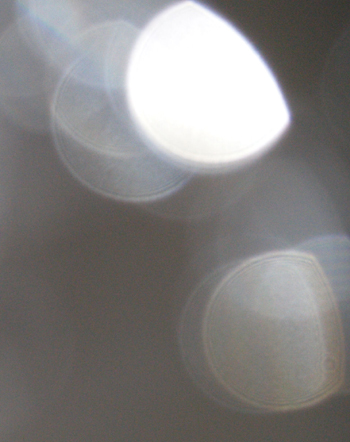
A: In some orb photos the normally circular orbs appear truncated (see pic above) when near the edge of the frame. This effect depends on the camera, the lens and the precise settings for the exposure which is why the effect is not seen in all orb photos. Circles appear truncated on one side. This is called the cat’s eye effect by photographers and is caused by optical vignetting. Such vignetting would not affect the shape of orbs if they were actually in-focus circular objects. This, therefore, demonstrates that the orbs in the photo are definitely out of focus, just as the orb zone theory predicts. They are not in-focus circular objects floating in front of the camera as paranormal explanations of orbs propose.
Q: I have bought a camera with higher number of megapixels but I still get orbs. Surely this shows that orbs are real.
A: Unfortunately, various people have suggested natural theories for orbs which are simply wrong. Some people had the idea that there were fewer orbs with higher megapixel cameras. This may be true, in some cases, but it is to do with the physical size of the camera sensor which can be related to the megapixel numbers. Tests have shown, as the orb zone theory predicts, that simply changing the number of megapixels has no effect on the number of orbs recorded.
Since even the largest digital sensors (generally in DSLRs) are no bigger than a 35mm film frame, which can produce the occasional orb, then even top specification cameras are subject to one or two orbs in certain circumstances.
Q: Aren’t single orbs paranormal? Don’t dust orbs only appear in larger numbers?
A: There is a popular idea that dust orbs come in groups, while single orbs must be paranormal. This myth may have started because people throw dust in front of their cameras, as a test, and get dozens or hundreds of orbs in one go. Of course, dust doesn’t behave like that ‘in the wild’. Dust particles float around on air currents and their distribution and concentration varies from minute to minute all the time. So, there is no reason why single orb couldn’t easily be caused by a dust particle. However, single orbs are more likely to be caused by insects than dust. Some cameras don’t produce dust orbs but DO produce insect orbs. Indeed, such single orbs are becoming more common.
Q: Aren’t three dimensional orbs paranormal?
A: Though the word ‘orb’ implies a three-dimensional sphere, orbs are actually circular (or another regular shape the same as the camera’s aperture). Examination of many thousands of orbs has so far failed to reveal any which even look spherical.
Q: Aren’t luminous orbs paranormal?
A: It is claimed that some orbs glow by their own light. However, there is no evidence of any such orbs from examination of thousands of orbs. For instance, a luminous orb would illuminate objects nearby, which has not been observed. Instead, they glow by reflecting back light from the camera flash or other light sources. When the object causing the orb, like a bit of dust, is very close to the flash it may appear very bright. Such an orb might even show a faint ‘glow’ around it. However, this is due to the way digital sensors tend to easily overexpose brightly lit objects.
Q: The vast majority of orbs may be caused by dust or insects but isn’t there a tiny number that are unexplained?
A: If the ‘unexplained’ orbs are exactly like the ‘explained’ ones, then it is logical to assume they also have the same explanation. If 1% of orbs are paranormal, why on earth should they ‘imitate’ the other 99% which are known to have natural causes? If gravity is the known cause of the downward flow of water in waterfalls, no one would speculate that there might be some other mechanism responsible in a tiny number of waterfalls somewhere in the world.
Q: If orbs are light bouncing off dust particles, shouldn’t the large ones be brighter, as they must be closer to the camera flash? In fact, they are generally fainter!
A: Larger orbs are indeed made by dust particles closer to the camera. However, they are out of focus! As you make objects go more out of focus with a lens, they produce bigger circles of confusion. These circles are also dimmer because the light is being spread over a wider area (the circle). This effect is stronger than the increase in brightness as a bit of dust gets closer to the camera flash. So, overall, larger orbs are fainter. Over a certain size, orbs vanish altogether which is why they don’t exceed about 10% of the frame size though they can be bigger than that in telephoto shots.
Q: I can predict / control where orbs appear in photos meaning they must be paranormal.
A: If this has only happened a few times, it is probably a coincidence. Try it many times to see. If it happens all or most of the time then you may be psychic. If you are psychic, either predicting or controlling the motion of orbs, it still does not make them paranormal. If the orbs are identical to all others then they are still likely to be out of focus bits of dust etc. If they look different to other orbs then they might represent another phenomenon entirely. It is also possible that you might, unconsciously, be throwing dust into the air by moving a little when ‘controlling’ orbs.
Q: I’ve seen orbs in daylight photos taken without flash, how can they be dust?
A: Daylight orbs are usually caused by insects rather than dust. Sometimes they are caused by flash which the photographer may not even notice. Flash is used automatically as a ‘fill-in’ in some camera settings, such as portrait mode, and goes off if the subject is dark relative to the background. Insect orbs may also be photographed in daylight when they are strongly illuminated by the sun. In all cases the insects are out of focus, just like ordinary orbs. Sometimes they crop up on video. These, too, are out of focus insects.
Q: I’ve seen black orbs on photos taken in daylight, what are they?
Q: I’ve seen small black orbs moving around in daylight video shots, what are they?
A: Small dark objects, usually the characteristic orb shape, occasionally show up in photos and particularly video, where their movement makes them easier to spot. They are usually only visible against a bright background like the sky or a sunlit scene. These are out of focus insects so they are caused in much the same way as ordinary orbs but without the need for a camera flash.
Q: On videos, I’ve seen orbs light up an area, how can they possibly be dust lit by reflection?
A: Sometimes an orb appears on a video just as objects nearby are being temporarily illuminated. This might appear to indicate that the orb is glowing and illuminating the area. However, it is the other way round. A light, from somewhere nearby but outside the video frame (possibly a momentary reflection from a highly reflective object), is strongly illuminating the area near the camera and causing orbs to appear there as well as light up other things nearby. If the orb was really glowing, it would look quite different to ‘normal’ out of focus reflection orbs, which it does not. The orb only appears when the extra light source is present and the illumination becomes strong enough to produce orbs.
Q: If orbs are out of focus objects, shouldn’t they be fuzzy?
A: When an object goes out of focus, individual highlights on it become circles in a photograph. The circles themselves can appear quite sharp but the object they represent becomes fuzzy, turning into a series of overlapping circles. You never normally see this effect with the naked eye which is probably why orbs appear odd.
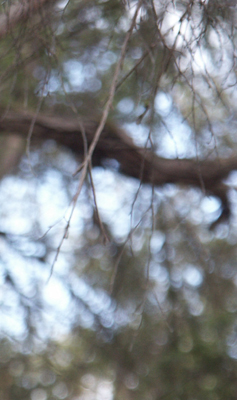
If you look at the photo, above, you can see a tree out of focus. Although the tree itself looks fuzzy, individual highlights show up as fairly sharp-edged circles. These are, in effect, orbs, though few people would describe them as such.
Individual highlights in a picture appear as circles because they are expanded from a dot when out of focus.
The diagram, below, shows a camera with a single lens projecting an image onto a CCD (the chip that records pictures - could also be MOS or any other digital sensor). In front of the lens there are two tiny points of light. The one labeled ‘A’ is far enough from the lens to be in focus. The continuous lines show how a sharp point image of ‘A’ is formed on the CCD. The point ‘B’, however, is too close to the camera to be in focus. As a result, the dotted lines show how it becomes spread-out on the CCD, even though ‘B’ is just a point source of light. This spread-out image appears as a circle. This circle can, if the point of light is a highlight produced by dust, an insect, water droplet etc, an orb. Though the circle may appear sharp-edged, it is actually an out of focus representation of a point.
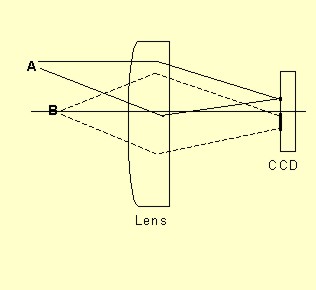
Here are some links that might be useful on this subject: Understanding Boke, testing bokeh.
Q: How can you test if orbs are really paranormal?
A: The orb zone theory has produced a number of questions for those who believe in a paranormal theory of orbs to answer. All of these questions can be easily answered by the orb zone theory. Any alternative paranormal theory must answer them satisfactorily too. They are:
- why orbs are so much more common on (though not exclusive to) digital cameras than film cameras
- why the vast majority of orbs are white or grey
- why the number of orbs seen is affected by the depth of field of a camera lens
- why you can take photos of orbs in front of backgrounds too close to be in focus (see here)
- why the vast majority of orbs are circular (but see exceptions below)
- why some orbs are truncated on the edges of some photos (see here)
- why some cameras always produce odd-shaped orbs (such as diamond shape)
- why orbs never exceed about one tenth of the frame size (except in telephoto / zoomed photos)
- why orbs are always in front of the many varied subjects in orb photos
- why orbs appear sharp in front of a motion-blurred background (see here)
There are lots of other more things that would also need to be explained but explaining everything on this list would be a good start to a better theory.
Orb myths
There are some odd ideas about orbs around. Here are a few of them:
- a) Orbs are caused by the close proximity of the flash to the lens on cameras
- This is partly true. However, the flash was close to the lens on compact film cameras too without causing many orbs. The reason why orbs suddenly became common with the advent of compact digital cameras was the increase in the depth of field of the lenses used.
- b) Orbs are caused by dust, insects and moisture (or water vapour)
- The first two are true but not the third. Air always contains water vapour, commonly described as moisture. However, it is an invisible gas. As such, it cannot reflect light and cause orbs, unlike dust. So simply being in a damp place is not a cause of orbs. However, water droplets, like mist or rain drops, CAN cause orbs.
- c) Orbs are visible with digital cameras because they are sensitive to infrared
- d) Orbs are in focus